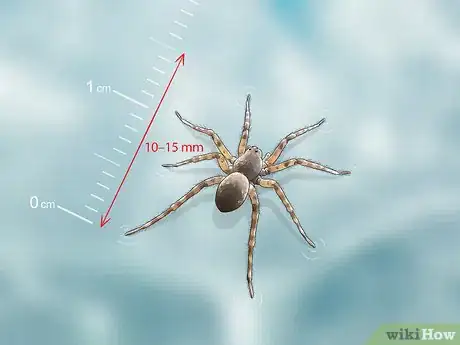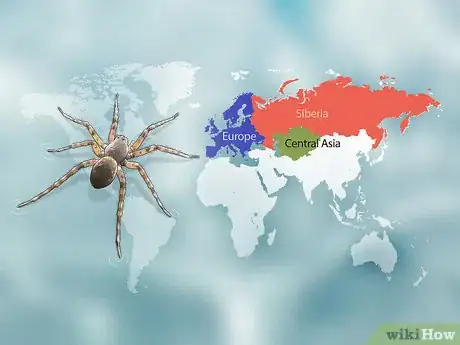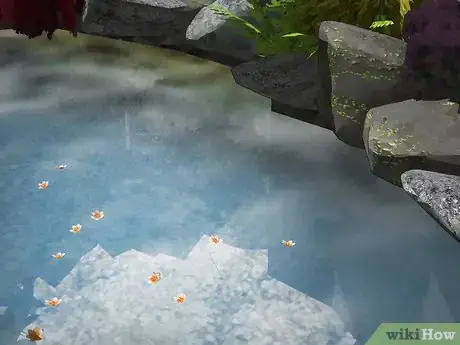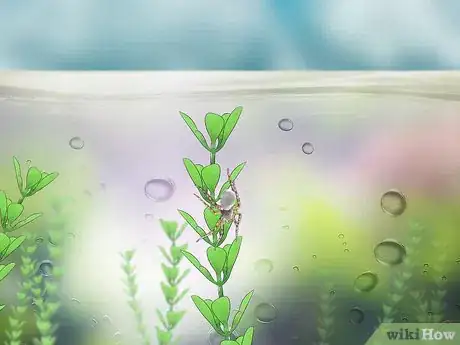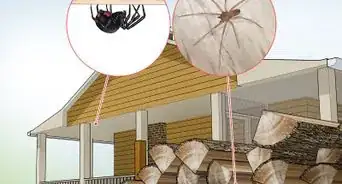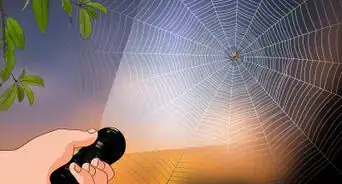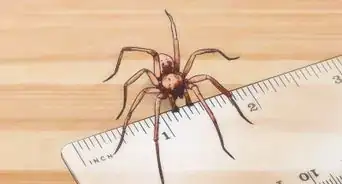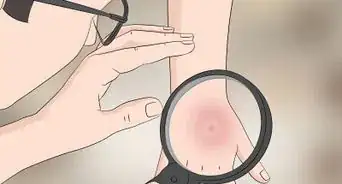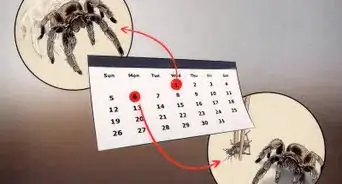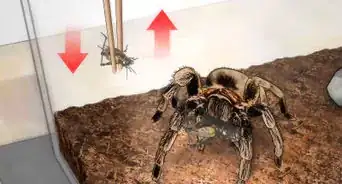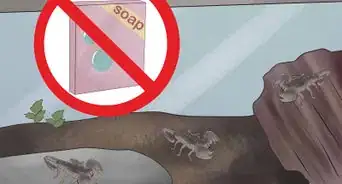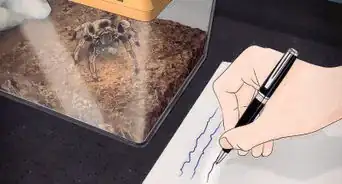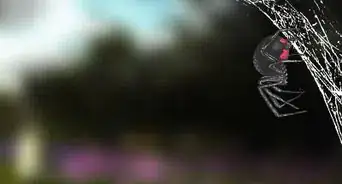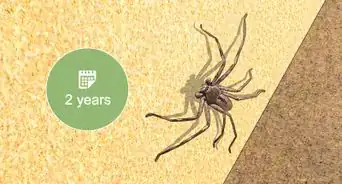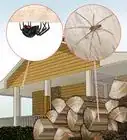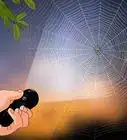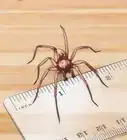This article was co-authored by wikiHow Staff. Our trained team of editors and researchers validate articles for accuracy and comprehensiveness. wikiHow's Content Management Team carefully monitors the work from our editorial staff to ensure that each article is backed by trusted research and meets our high quality standards.
This article has been viewed 87,001 times.
Learn more...
While other spider species live around or near water, the water spider (also known as the diving bell spider) is the only species that lives entirely underwater. Water spiders are able to survive because they carry around a bubble of oxygen that connects to their bodies. These spiders form underwater web structures that are full of tiny air bubbles, which help the spiders to stay underwater for over 24 hours before needing to resurface. Water spiders are found in Europe and Asia.
Steps
Examining the Spider's Appearance
-
1Check that the spider is 10–15 mm (0.39–0.59 in) in length. Water spiders are very small and most individuals tend to be within this range. However, male water spiders have been found to be from 7.8 to 18.7 mm (0.31 to 0.74 in) and female spiders from 7.8 to 13.1 mm (0.31 to 0.52 in).[1]
- Male water spiders tend to be larger than the females because males spend more time hunting, which requires greater strength to overcome the resistance of the water. On the other hand, females tend to spend more time maintaining their webs.
-
2Look for a brown and velvety body. Water spiders have a head and thorax that is either light or dark brown. The abdomen tends to be dark brown and velvety in appearance.[2]
- Sometimes water spiders can have a silvery appearance. This is because of the air bubble.
Advertisement -
3Observe a large bubble that is connected to the spider. Water spiders have a large air bubble connected to their abdomen. This enables them to breathe underwater. The bubble is made from the air that is trapped in the tiny hairs that cover the spider’s legs and abdomen.[3]
- The bubble stays connected to the spider for the whole time it is underwater, even while the spider is swimming and hunting.[4]
Observing the Spider's Environment and Behavior
-
1Know that water spiders are found in Europe, Siberia, and Asia. Geographically, water spiders are predominantly found in Central Asia, and Central and Northern Europe. You won't find water spiders in the USA, Canada, South America, Africa, or in the Pacific.[5]
-
2
-
3See if the spider spends the majority of the day underwater. Water spiders are the only species of spider that live underwater. The spiders travel to the surface of the water approximately once per day for oxygen. All other activities, such as hunting and breeding, occur underwater.[8]
- The bubble that is connected to the spider has nitrogen inside it which causes it to shrink over time. The spider will resurface to create a new bubble.[9]
Community Q&A
-
Question
 AmphibianCommunity Answer
AmphibianCommunity Answer -
QuestionHow do I get rid of water spiders?
 Community AnswerTake away or move the water, but beyond that, there isn't much you can do. If they're in your pool, you could add chemicals to the pool that could get rid of them.
Community AnswerTake away or move the water, but beyond that, there isn't much you can do. If they're in your pool, you could add chemicals to the pool that could get rid of them. -
QuestionDo water spiders come into houses.
 AmphibianCommunity AnswerNot usually. They would mostly just live in the water, as they don't need to come out of it.
AmphibianCommunity AnswerNot usually. They would mostly just live in the water, as they don't need to come out of it.
Warnings
- Despite being very small, water spiders can bite humans. Their venomous fangs can pierce through human skin, which can result in inflammation and sometimes a fever. Seek medical attention if you have any concerns.[11]⧼thumbs_response⧽
References
- ↑ https://animalsake.com/water-spider
- ↑ https://animalsake.com/water-spider
- ↑ https://www.arkive.org/water-spider/argyroneta-aquatica/
- ↑ https://www.nationalgeographic.com/science/phenomena/2011/06/09/the-diving-bell-and-the-spider/
- ↑ https://animalsake.com/water-spider
- ↑ https://www.britannica.com/animal/water-spider
- ↑ https://www.arkive.org/water-spider/argyroneta-aquatica/
- ↑ http://jeb.biologists.org/content/214/13/2175
- ↑ https://www.livescience.com/14517-diving-bell-spiders-underwater-bubbles.html
About This Article
To identify a water spider, look for a spider with a brown and velvety-looking body that's 10-15 millimeters in length. Also, look for a large bubble connected to the spider's abdomen, which is what water spiders use to breathe underwater. Keep in mind that water spiders are only found in Europe, Siberia, and Asia, and they're most commonly found in freshwater environments like lakes and ponds. To learn how to tell the difference between a male and female water spider, read on!
